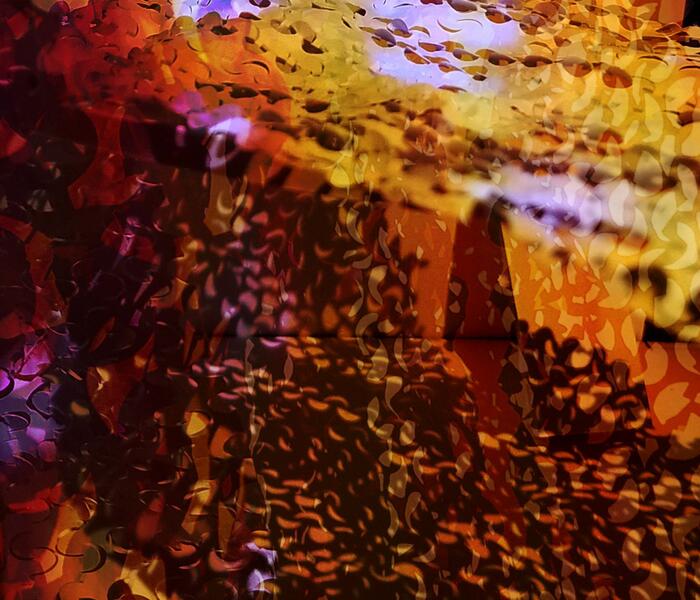A collaborative & interactive art installation
Heather parrish & Leslie gross-wyrtzen

In Fugitive::Grounds, we consider the desert as borderland. Desert landscapes are often depicted as empty or liminal spaces, the boundaries between human geographies. In fact, deserts have always been important sites of mobility and place-making—spaces of connectivity that archive state and imperial narratives, projects, and memories, but also more fugitive histories, knowledges, practices and relations.
This interactive installation invites us to consider the desert as a fugitive landscape, one that resists the disciplining power of the state, even as the state tries to mobilize it as a barrier. Deserts are shifty and shifting places, sites of exposure and refuge, memory and forgetting, sociality and solitude. Utilizing permeable boundaries, video projection and sound, Fugitive:: Grounds invites us not only to approach geography differently, but each other.
Fugitive::Grounds is part of a larger collaboration entitled Border Work, which uses the languages and methodologies of visual art and critical theory to explore the politics and aesthetics of borders and boundaries. We are interested in how such explorations can disrupt hegemonic binaries (such as outside/inside, included/excluded, mobile/immobile, nature/ culture, citizen/alien) and challenge modernist narratives of time as progressive and space as static and bounded. Through invitation–into the creative process, into place, into relation–we seek to foster new imaginings of the possible.
Collaborators
As a visual artist, Heather Parrish employs materiality, light, image and form, creating nuanced, experiential spaces to unsettle simple binaries and foster consideration of complex embodiments of boundaries. Rather than firm and fixed, she explores the productive and dynamic potentialities of boundaries as porous sites of exchange. As a feminist political geographer, Leslie Gross-Wyrtzen’s research uses postcolonial theory and Black geographies literature to situate present-day European immigration policy enacted in Morocco in longer colonial histories of racial dehumanization and violence in Africa. She employs critical ethnography to think about how political borders— walls, fences, legal regimes, technologies and discourses of citizenship— articulate with more fundamental boundaries in modernity to define the human.